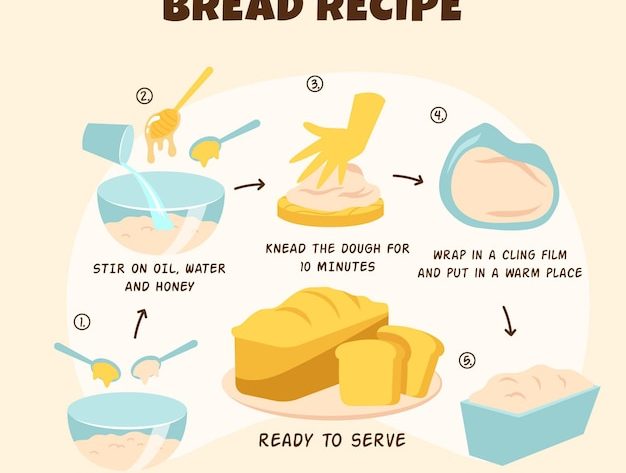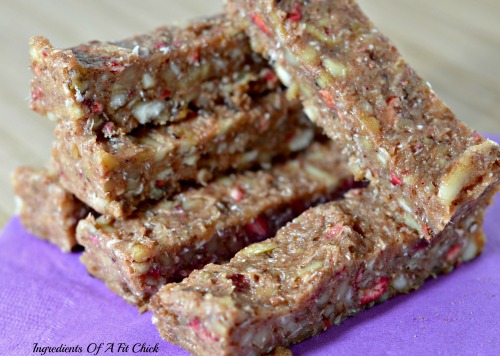The Essential Role of Flour in Baking
In the realm of culinary creations, one fundamental component stands as a cornerstone of countless recipes. This ingredient contributes not only to texture but also enhances flavor, making it indispensable for both novice cooks and experienced chefs. Understanding its nuances can elevate creations from ordinary to extraordinary.
Every delectable treat, from soft pastries to hearty breads, showcases the remarkable adaptability of this versatile powder. Its unique properties allow for a range of techniques, transforming simple mixtures into tantalizing delights. Recognizing how its characteristics influence various processes is key to mastering techniques that yield outstanding outcomes.
The science behind this ingredient is intricate, involving gluten formation, hydration, and other physical transformations. By delving into the specifics, one can appreciate how subtle variations in quality or type can dramatically impact overall satisfaction. Through careful selection and application, remarkable culinary feats can be achieved.
The Science Behind Flour Types
Different varieties of grain powders exhibit unique characteristics that significantly influence culinary outcomes. Each type possesses distinct properties affecting texture, flavor, and structure of final products.
When selecting a specific grain powder, consider the following factors:
- Protein Content: Varies widely among types, impacting gluten formation.
- Granulation: Fine or coarse textures change absorption rates and moisture retention.
- Fiber Level: Affects crumb structure and nutritional value.
- Aging Process: Spontaneous chemical changes enhance performance over time.
Here are common types of grain powders and their applications:
- All-Purpose: Versatile choice, suitable for a range of pastries and breads.
- Bread: High protein content creates strong gluten structure, ideal for yeast-leavened items.
- Cake: Low in protein, leads to tender crumb, perfect for delicate desserts.
- Whole Wheat: Offers rich flavor and increased fiber, but may require adjustments in recipes.
- Rye: Unique flavor with lower gluten, producing denser outcomes.
Selecting appropriate grain powder is essential for achieving desired culinary results, as it influences both texture and flavor profiles in various creations.
How Gluten Affects Baking Performance
Gluten plays a crucial part in the success of various culinary creations, impacting texture, structure, and overall quality. It is a protein complex that forms when specific grains are mixed with moisture and manipulated through kneading or mixing. This interaction shapes the final texture and consistency of dough, significantly influencing how baked goods rise and maintain their form.
When flour is hydrated, gluten proteins begin to bond, creating a network that traps air bubbles produced by leavening agents. This process is vital for achieving lightness in products like bread and pastries. The strength of this gluten network determines the elasticity and extensibility of the dough. A strong network allows for better gas retention, resulting in a desirable height and chewy texture.
Different types of flour have varying gluten content, which further affects the performance in the kitchen. For instance, bread flour, with its higher protein content, creates a robust structure suitable for yeast breads, while cake flour, having less protein, leads to tender, delicate results. Understanding these variations allows bakers to select the appropriate flour for their intended outcome, achieving desired textures and flavors.
Additionally, factors such as hydration levels, mixing methods, and resting times also influence gluten development. Proper kneading is vital, as it encourages gluten formation, balancing strength with extensibility. Overworking the dough can lead to excessive toughness, while undermixing may result in a weak structure. Mastery of these elements can significantly elevate the quality of baked goods, making gluten an indispensable component in successful culinary practices.
Choosing the Right Flour for Recipes
Selecting an appropriate type of grain product is essential for achieving desired culinary outcomes. Different varieties provide distinct characteristics that can significantly impact texture, flavor, and overall success of any dish. Understanding specific qualities of each type leads to better results in preparation, ensuring that baked goods meet expectations.
Types of Grain Products
Each variety of grain product serves a unique purpose in recipes, categorized primarily by their protein content and milling process. Below is a brief overview of common types of grain products used in kitchens:
| Type | Protein Content | Best For |
|---|---|---|
| All-Purpose | 10-12% | Various recipes, including cookies, cakes, and bread |
| Whole Wheat | 13-15% | Breads and pastries with a hearty taste |
| Bread | 12-14% | Yeast breads, rolls, and pizza dough |
| Cake | 7-9% | Fluffy cakes and delicate pastries |
| Pastry | 8-10% | Rich pastries and tarts |
Selecting Based on Recipe Needs
When considering a recipe, it is crucial to reflect on its specific demands. For instance, recipes requiring high structure, such as artisan bread, benefit from higher protein content. Conversely, delicate cakes require lower protein levels for a tender, crumbly finish. By aligning the selection with intended outcomes, one ensures the best performance and satisfaction in culinary creations.
Flour’s Role in Texture and Flavor
The choice of a specific type of grain powder can significantly influence both consistency and taste of various culinary creations. When combined with other ingredients, it interacts to form a delightful union, enhancing mouthfeel and overall satisfaction.
Different kinds of grain powders offer unique characteristics that impact culinary outcomes:
- Texture:
- Fine milled varieties, like cake flour, contribute to a tender and delicate crumb.
- Coarser options, such as whole wheat, lend a heartier and denser quality.
- Gluten content varies across types, affecting chewiness and structure.
- Flavor:
- Lightly milled versions tend to impart a neutral taste, allowing other ingredients to shine.
- Whole grain selections bring a nutty depth, enriching overall flavor profiles.
- Specialty powders, like rye or spelt, introduce distinct notes that can elevate traditional recipes.
Recognizing how grain powder influences both mouthfeel and taste enables bakers to make informed decisions, ultimately leading to delicious outcomes tailored to specific preferences or occasions.
Measuring Flour Accurately for Success
Precision in measurement is crucial in culinary practices, particularly when working with dry ingredients. Inaccurate quantities can lead to undesirable outcomes, altering texture, taste, and overall quality of the final dish. Implementing reliable techniques ensures consistent and appealing results each time.
Consider the following methods for achieving accurate measurements:
- Scoop and Level
- Use a spoon to aerate the ingredient within its container.
- Gently scoop the ingredient into your measuring cup without packing it down.
- Level off the excess with a straight edge, such as a knife.
- Weighing
- Utilize a digital kitchen scale for utmost accuracy.
- Zero out the scale with your container before adding the ingredient.
- Refer to specific recipes for desired weight measurements.
- Using Sifters
- Sifting before measuring helps in reducing clumps and ensures lightness.
- Measure sifted ingredient directly or sift after measuring, according to recipe instructions.
By employing these techniques, bakers can ensure that their creations maintain expected standards, resulting in delicious and satisfying dishes.
Common Mistakes When Using Type of Flour
Using this essential ingredient can be tricky, and many enthusiasts make errors that impact their culinary creations. While experimenting in the kitchen, it’s easy to overlook some fundamental practices, leading to unsatisfactory outcomes. Awareness of these common pitfalls can significantly enhance your experience.
One frequent mistake is neglecting to measure accurately. Different techniques such as scooping directly from a bag or bagging it down can lead to inconsistent quantities. Using a scale or proper measuring cups can help maintain precision.
Another issue arises from assuming that all varieties are interchangeable. Each type has specific properties that affect texture and flavor, so substituting one for another without understanding its characteristics can yield unwanted results.
Additionally, ignoring the importance of sifting can be detrimental. This process helps aerate the ingredient and eliminate clumps, which is crucial for achieving a light and fluffy texture.
Lastly, many overlook storage conditions. Exposure to moisture, heat, or prolonged sitting can compromise quality, leading to poor performance during cooking. Proper storage in a cool, dry place is essential for maintaining freshness.
Q&A: What does flour do in baking
What is the primary role of flour in baking?
Flour serves as a fundamental ingredient in baking, providing structure and stability to baked goods. It contains proteins, primarily glutenin and gliadin, which when combined with water, form gluten. This gluten network traps air bubbles during mixing, allowing the dough or batter to rise and maintain its shape during baking. Additionally, flour contributes to the overall texture, flavor, and nutritional profile of the final product, making it a crucial component in achieving perfect results.
How does the protein content of flour affect baking results?
The protein content of flour significantly influences the texture and structure of baked goods. For instance, bread flour, which contains a higher protein percentage (around 12-14%), is ideal for yeast breads as it develops more gluten, providing the necessary elasticity and chewiness. In contrast, cake flour has a lower protein content (about 7-9%), resulting in less gluten formation, which produces a tender and fine crumb in cakes. Choosing the right type of flour based on its protein content is essential for achieving the desired texture and consistency in your baked products.
What types of flour are available, and how do I choose the right one for my recipe?
There are various types of flour available, each suited for different baking needs. Common types include all-purpose flour, bread flour, cake flour, whole wheat flour, and pastry flour. When choosing flour, consider the recipe and the desired outcome. For example, use all-purpose flour for general baking, bread flour for yeasted bread, cake flour for light and fluffy cakes, and whole wheat flour for a denser, more nutritious option. It’s also important to check the protein content and any additional ingredients, such as leavening agents, that might affect the overall results.
Can I substitute one type of flour for another in baking, and what should I be aware of?
Yes, you can substitute one type of flour for another, but there are several factors to consider. Substituting all-purpose flour for cake flour will result in a denser product due to higher gluten content; to compensate, you can reduce the amount of flour used or add cornstarch to achieve a lighter texture. Additionally, keep in mind that whole wheat flour absorbs more water, so you may need to adjust the liquid in your recipe. Substitutions can lead to varied results, so it’s advisable to experiment or follow specific guidelines for adjustments to maintain the desired texture and flavor.
What is the importance of measuring flour accurately in baking?
Accurate measurement of flour is crucial in baking as it directly impacts the recipe’s outcome. Too much flour can lead to dry, crumbly baked goods, while too little can result in overly wet, dense products. Different methods of measuring, such as scooping versus spooning, can alter the amount of flour used, so it’s recommended to weigh flour for precision. A digital kitchen scale is an excellent tool for this purpose, providing consistent results. Accurate measurement ensures that the balance of ingredients is maintained, leading to successful baking results every time.
What are the different types of flour used in baking, and how do they affect the final product?
There are several types of flour used in baking, each with its unique properties that influence the texture, flavor, and structure of baked goods. Common types include all-purpose flour, which is versatile and can be used for a variety of recipes; bread flour, which has a higher protein content that enhances gluten development for chewy textures; cake flour, which is finely milled and low in protein to create tender and delicate cakes; and whole wheat flour, which adds a nuttier flavor and denser texture due to the inclusion of the entire grain. The protein content in flour is crucial because it affects gluten formation, which contributes to the rise and structure of baked items. Therefore, choosing the right type of flour is essential for achieving perfect baking results, as it directly impacts the final product’s quality.
What is the difference between white flour and whole wheat flour?
White flour is made by removing the bran and germ from the wheat kernel, leaving only the starchy endosperm. Whole wheat flour, on the other hand, is made from the entire wheat kernel, including the bran, germ, and endosperm, making it higher in fiber and nutrients.
How is self-rising flour different from all-purpose flour?
Self-rising flour contains baking powder and salt added to it, which means it is ready for recipes that require leavening. All-purpose flour does not contain these leavening agents and is used in recipes where the leavening needs to be added separately.
What are the characteristics of white whole wheat flour?
White whole wheat flour is made from a lighter type of wheat, such as hard white wheat, and has a milder flavor and lighter color compared to traditional whole wheat flour. It still contains the bran, germ, and endosperm, providing more nutrients and fiber than white flour.
How does unbleached flour differ from bleached flour?
Unbleached flour is naturally aged and does not undergo chemical bleaching, resulting in a slightly off-white color. Bleached flour is treated with chemicals to speed up aging and achieve a whiter color, but this process can alter the flour’s texture and baking properties.
What is the role of flour in baking?
Flour provides structure and stability to baked goods through its gluten-forming proteins. It also absorbs moisture and contributes to the texture, density, and overall consistency of the final product.
How is self-raising flour used in baking?
Self-raising flour is used in recipes where a leavening agent, such as baking powder, is needed. It simplifies the baking process by combining flour with baking powder and salt, making it ideal for quick breads, cakes, and biscuits.
What is the function of bran and germ in whole wheat flour?
The bran and germ in whole wheat flour add fiber, vitamins, and minerals to the flour. The bran contributes to the texture and may add a nutty flavor, while the germ provides essential nutrients and oils that can improve the nutritional profile of baked goods.
Why might someone choose gluten-free flour over regular flour?
Gluten-free flour is used by individuals who have celiac disease or gluten intolerance, as it does not contain gluten, a protein found in wheat that can cause adverse reactions. Gluten-free flours are made from alternative grains or starches and require different handling in recipes.
What is the best type of flour for baking bread?
Bread flour is the best type of flour for baking bread because it has a higher protein content compared to other flours, which helps develop more gluten. This gluten structure provides the elasticity and chewiness needed for a well-textured loaf.
How is cake flour different from all-purpose flour?
Cake flour is a finely milled, low-protein flour that results in a softer, more tender crumb in cakes and pastries. It has less gluten-forming protein compared to all-purpose flour, which helps create a lighter texture in delicate baked goods.




